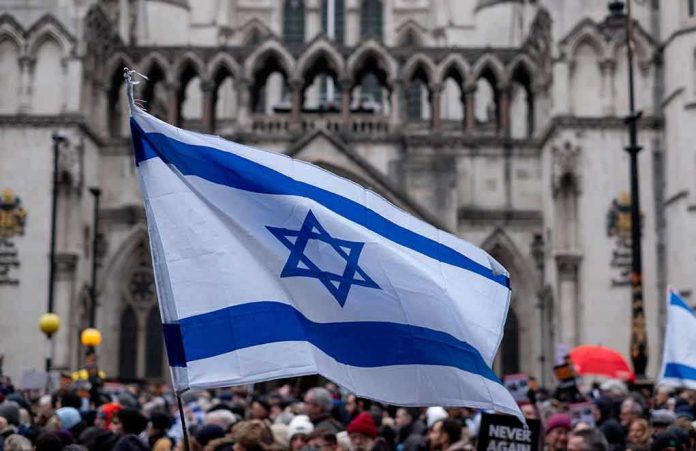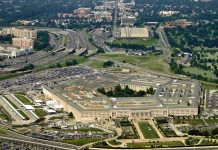
As the last Israeli hostage stepped off the transport, two years of agony collapsed into a single, breathtaking moment—ushering in a chapter where healing might finally outpace heartbreak.
Story Overview
- All living Israeli hostages released simultaneously after 738 days in Gaza captivity, closing the book on a national trauma.
- The formal end of the Israel-Hamas war coincides with President Donald Trump’s historic visit and address to the Knesset.
- Families reunite in scenes of raw emotion, sparking hopes for social and political recalibration in Israel.
- The event reshapes regional dynamics, with international mediators and global attention spotlighting the moment.
Hostage Release: A Defining Moment for Israel
October 13, 2025 marked a seismic shift in Israeli society. After protracted negotiations and intermittent releases, every living hostage held by Hamas in Gaza was returned home in a single, unprecedented wave. The coordinated release was neither gradual nor piecemeal; it was a decisive exchange, enabled by a two-round agreement and the repositioning of Israeli Defense Forces in Gaza. The collective exhale from families, communities, and officials reverberated far beyond Israel’s borders, signaling not just the end of a conflict, but the beginning of a healing process that the nation desperately needed.
The emotional reunifications captured on broadcast and social media painted a vivid portrait: tears, embraces, and the silent reckoning with trauma that words rarely capture. For families whose loved ones spent 738 days in captivity, the return was both an ending and a new beginning. Yet, in the midst of celebration, national mourning continued for four hostages whose remains were scheduled for return—an enduring reminder of the war’s human toll.
Negotiations, Diplomacy, and President Trump’s Arrival
The mechanics of this grand release were as complex as the conflict itself. Hostages were initially taken in October 2023 during a major escalation by Hamas. For two years, the Israeli government faced mounting pressure, both domestically and internationally, to secure their freedom. Multiple failed negotiations and intermittent ceasefires kept the crisis in perpetual motion. The breakthrough came only after the IDF repositioned its forces in Gaza, a gesture that unlocked the final agreement brokered with the aid of Egypt, Qatar, and the United States. The timing was deliberate; President Donald Trump’s visit and his address to the Knesset added diplomatic gravity, signaling to allies and adversaries alike that the war was over and a new chapter had begun.
🚨 FOX NEWS ALERT: President Trump lands in Tel Aviv, Israel.
“He’s receiving a hero’s welcome for his role in making this day happen,” says Fox’s @JonScottFNC pic.twitter.com/Bror2wkBnz
— TV News Now (@TVNewsNow) October 13, 2025
Trump’s presence in Jerusalem was more than ceremonial. His public support and engagement with Israeli leadership reframed the release as a global event, drawing attention from media, policymakers, and ordinary citizens worldwide. The confluence of military precision, diplomatic maneuvering, and presidential endorsement amplified the message: Israel was ready to heal, and the region was poised for recalibration.
The Human Cost and Societal Repercussions
With hostages now undergoing medical and psychological evaluation, the process of rehabilitation begins. The toll of captivity—physical, emotional, and psychological—will demand sustained attention from Israel’s health and social services. Experts in trauma recovery emphasize that healing will extend well beyond the first embrace. The broader Israeli society, having been gripped by collective anxiety and grief, now faces its own journey of reconciliation. The return of hostages has ignited renewed calls for peace-building, social cohesion, and a reexamination of strategies for handling future crises.
The economic implications are substantial. The cost of military operations, protracted negotiations, and comprehensive rehabilitation programs will weigh on the state’s budget. Yet, the restoration of public trust in government and military institutions may prove even more valuable, reinforcing legitimacy and stability after years of uncertainty.
Regional Impact and Expert Perspectives
The ripple effects are felt far beyond Israel. Palestinian civilians in Gaza, caught between military operations and humanitarian fallout, face their own reckoning. International mediators—especially Egypt and Qatar—have gained credibility as effective brokers, shaping future diplomatic pathways in the region. Security analysts dissect the operational complexity, noting lessons for crisis management and negotiation tactics. Human rights advocates urge continued support for survivors and vigilance against future abuses. Political scientists frame the event as a significant case study in conflict resolution, highlighting both the promise and limitations of high-stakes diplomacy.
Diverse voices caution that underlying issues remain unresolved. While many hail the release as a victory for negotiation and international engagement, others warn against complacency, pointing to the persistent roots of territorial, political, and religious disputes. The need for long-term healing—politically, socially, and psychologically—cannot be overstated. The event’s symbolism is undeniable, but its true legacy will depend on what comes next: sustained peace, thoughtful policy, and a commitment to never repeat the tragedies of the past.













